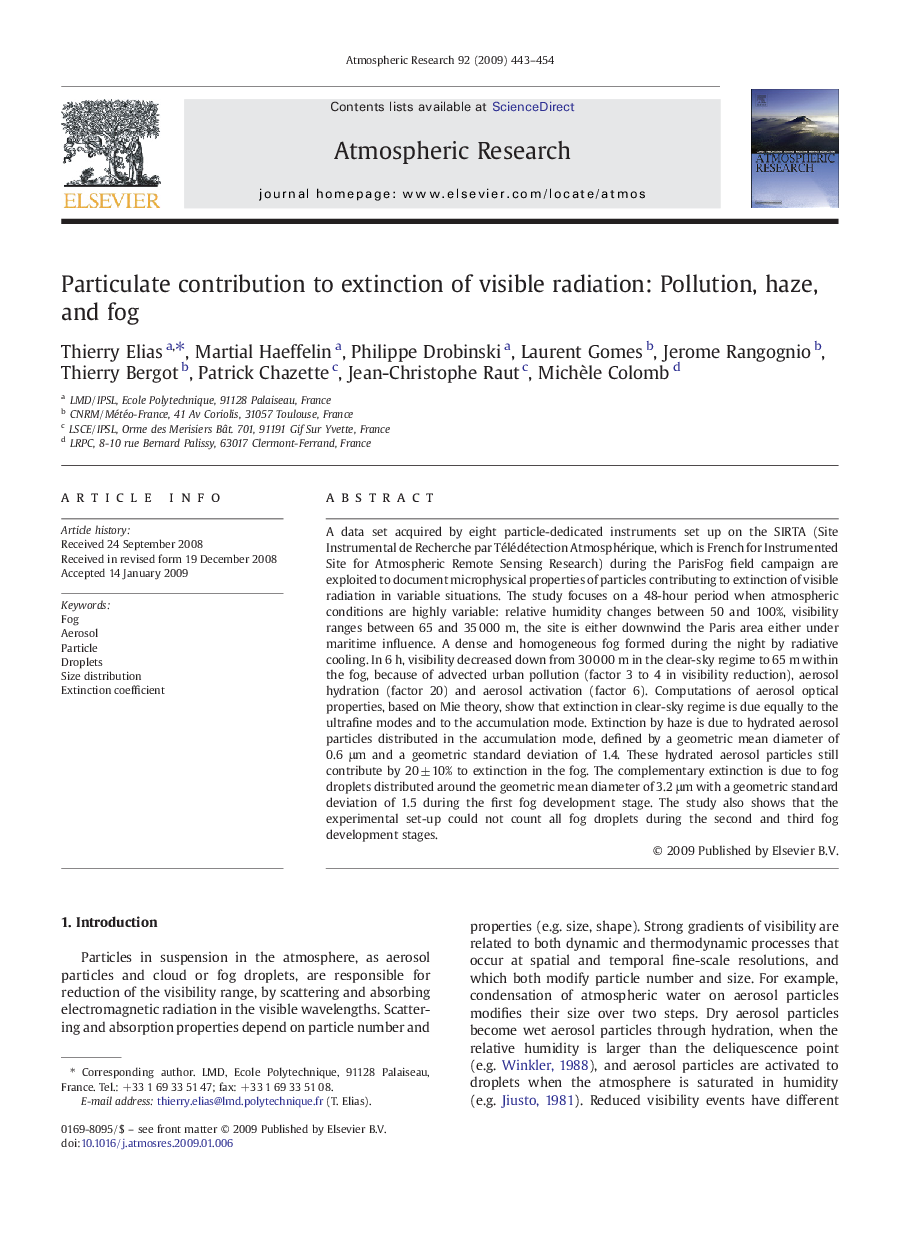| کد مقاله | کد نشریه | سال انتشار | مقاله انگلیسی | نسخه تمام متن |
|---|---|---|---|---|
| 4450978 | 1311727 | 2009 | 12 صفحه PDF | دانلود رایگان |

A data set acquired by eight particle-dedicated instruments set up on the SIRTA (Site Instrumental de Recherche par Télédétection Atmosphérique, which is French for Instrumented Site for Atmospheric Remote Sensing Research) during the ParisFog field campaign are exploited to document microphysical properties of particles contributing to extinction of visible radiation in variable situations. The study focuses on a 48-hour period when atmospheric conditions are highly variable: relative humidity changes between 50 and 100%, visibility ranges between 65 and 35 000 m, the site is either downwind the Paris area either under maritime influence. A dense and homogeneous fog formed during the night by radiative cooling. In 6 h, visibility decreased down from 30 000 m in the clear-sky regime to 65 m within the fog, because of advected urban pollution (factor 3 to 4 in visibility reduction), aerosol hydration (factor 20) and aerosol activation (factor 6). Computations of aerosol optical properties, based on Mie theory, show that extinction in clear-sky regime is due equally to the ultrafine modes and to the accumulation mode. Extinction by haze is due to hydrated aerosol particles distributed in the accumulation mode, defined by a geometric mean diameter of 0.6 μm and a geometric standard deviation of 1.4. These hydrated aerosol particles still contribute by 20 ± 10% to extinction in the fog. The complementary extinction is due to fog droplets distributed around the geometric mean diameter of 3.2 μm with a geometric standard deviation of 1.5 during the first fog development stage. The study also shows that the experimental set-up could not count all fog droplets during the second and third fog development stages.
Journal: Atmospheric Research - Volume 92, Issue 4, June 2009, Pages 443–454